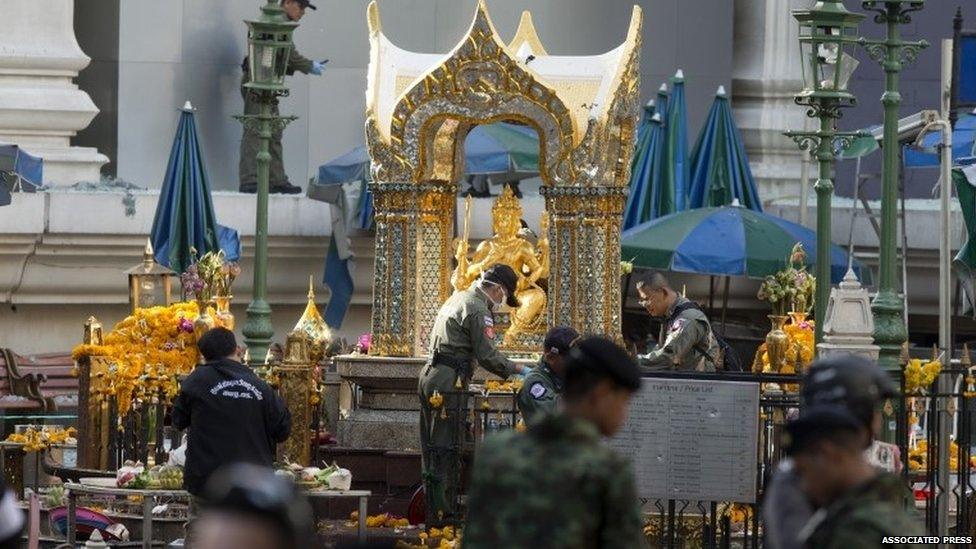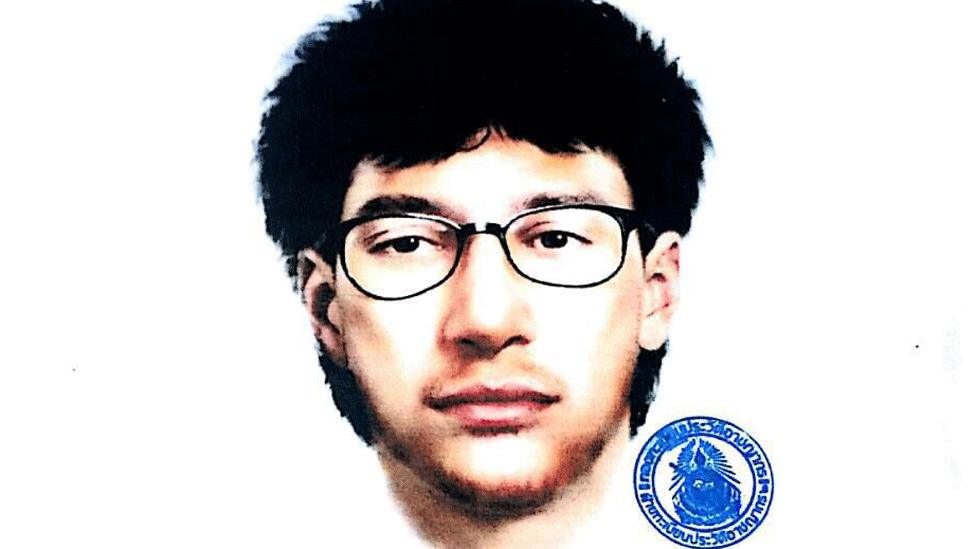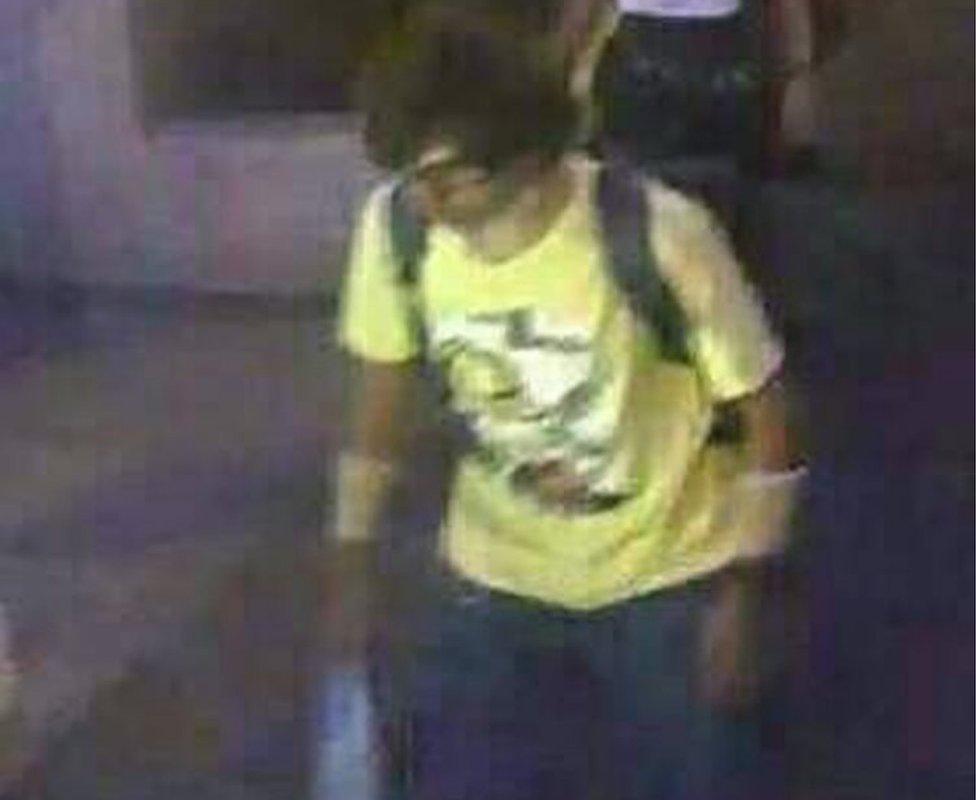Bangkok bomb: What do we know?
- Published

The Erawan shrine is popular with tourists and locals
A bomb ripped through central Bangkok, close to the Erawan Shrine, on Monday 17 August, killing 20 people. Here is what we know about the incident so far.
What happened?
At about 19:00 local time (12:00 GMT) an improvised explosive device detonated inside the Erawan shrine in central Bangkok.
Thai police said it was a pipe bomb - 3kg (6.5lb) of TNT explosive stuffed into a pipe and wrapped with white cloth.
The explosion killed 20 people, according to officials, 12 of whom died at the scene. More than 120 people were injured.
Correspondents described a site of carnage, with body parts strewn across the area as well as broken glass and burned-out vehicles.
Bomb disposal units checked two suspicious objects but found no other bombs.
Who did it?

Thai police have released a sketch of the bombing suspect
No-one has said they carried out the attack but police have released a detailed sketch of the main suspect. The man was earlier pictured on CCTV, dressed in a yellow shirt, leaving a backpack at the shrine.
The Thai authorities said the suspect was a foreigner and that he was working as part of a network of 10 or more people.
But they said the bombing was "unlikely" to be the work of an international terror group, and that they did not believe Chinese tourists had been specifically targeted, who made up most of the foreigners killed.

A young man is seen on CCTV footage leaving a backpack near the shrine
What's the significance of the Erawan shrine?
The shrine, built to bring good fortune to the five-star hotel next door, is dedicated to the Hindu creation god Brahma, but it is popular with Thai Buddhists too.
Thousands of people, including tourists, visit it every day, and Thais will often stop for a brief prayer as they pass by at any time of the day.
Has Bangkok been hit before?
The capital is no stranger to unrest and has seen small bombs before, during the years of tussling between political factions. But it has never seen an attack on this scale.
The Ratchaprasong intersection where the blast occurred has been the location of mass political protests in recent years and has been targeted before.
In February, two bombs exploded on the Ratchaprasong Skywalk outside the Siam Paragon shopping mall, injuring two people.
Those were politically motivated according to the Bangkok Post newspaper.
Are there any other suspects?
Who could be behind the deadly attack on the Thai capital? Bridget Kendal reports
Some will point fingers at Islamist insurgents who have for years been fighting for an independent state in the south of Thailand, says the BBC's Jonathan Head, but they carry out small-scale attacks in the south. They have never perpetrated an attack outside the area, nor have they targeted tourists.
The army chief has said the attack does not match the tactics used by the insurgents.
Others, says our correspondent, will blame the recent political violence in Thailand.
Thailand is deeply divided between supporters of the Shinawatra family, mainly rural farmers, and the Bangkok elite that accuses them of corruption.
After months of unrest that sometimes erupted into violence on the streets, the military took control last May.
This has outraged supporters of Thaksin Shinawatra - a former prime minister - whose sister, Yingluck Shinawatra, headed the democratically elected government that was ousted.